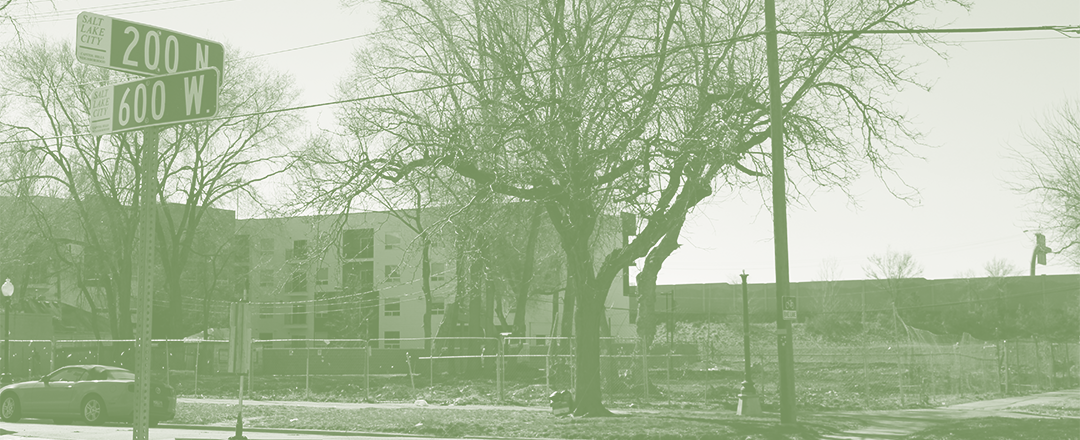
This article is a response to an article written by Taylor Anderson for Building Salt Lake on the Kozo apartment complex on Feb. 17, 2022: https://www.buildingsaltlake.com/west-side-project-that-stalled-amid-protests-is-back-with-revisions/
Two weeks ago, Taylor Anderson wrote an article for Building Salt Lake looking at the updated plans for the Kozo House Apartments development in the Rose Park neighborhood. Apart from providing a basic overview of the updated project, Taylor also gave an uninformed, incomplete, and inaccurate description of the protests surrounding the initial Kozo project. Throughout the article, Taylor makes two things clear, first that he doesn’t understand what the Rose Park Brown Berets (RPBB) were and are protesting against and second that his understanding of development begins and ends at the point of view of the developers who fund Building Salt Lake.
Throughout the article Taylor makes vague references to the demands of the anti-Kozo protesters; in the article’s first sentence he writes that the protesters “saw [the project] as displacement,” going on to say later in the article that the protests were an attempt to “save a row of single-family homes on the site.” Either Taylor failed to do basic research into the anti-Kozo protests or he willfully chose to misrepresent both the aims of the protesters and the real affects the Kozo project has already had. Nowhere in his article is gentrification brought up, the widely recognized cause of the displacement he failed to identify. There is no ambiguity about whether the Kozo has caused displacement, throughout their protests the RPBB have centered the voices and experiences of Tina Balderrama and the other 5 families1 who lived on the project site until they were evicted from their homes to make way for this project. This fact is never brought up in Taylor’s article; the Brown Berets don’t just “see the project as displacement,” they see with open eyes the existing displacement of these families at the behest of developers and correctly identify it as gentrification. Their opposition to the project doesn’t come out of some NIMBY-induced fear of density, but the real and ongoing replacement of working-class families of color by developers, who, and Taylor is correct in this regard, have been led, hand-in-hand, by the city government, to gentrify and profit from historically under-developed working class neighborhoods.
This brings us to Taylor’s second point in his article, that “the relative backlash against Kozo highlights the need for basic understanding of existing zoning and rezone requests.” While it is clearly true that zoning and rezoning are technical and obfuscated processes which occur without the neighborhoods which are being (re)zoned, and that these processes can and should be better understood, Taylor’s assumption that this backlash comes from a place of ignorance about these processes is patently untrue. Understanding why cities and developers are structurally incentived to, in Taylor’s words, “purchase properties, demolish and build,” does not mean that we cannot and must not still oppose these processes and projects as inhumane, violent, and racist. That displacement in the name of redevelopment is legal does not mean that it is right, okay, or any less racist than the (entirely legal) process of redlining was in the 1930s2. But Taylor, and Building Salt Lake, shouldn’t be expected to see the harm their sponsors support (di’velept designs, designers of the Lusso Apartments and the Chicago Street Townhomes, two other projects in Rose Park which the RPBB have organized against, is a “Gold Sponsor” of Building Salt Lake).
Taylor also provides a relatively good description of one of the leading actions cities undertake to spur gentrification, upzoning. “When the City Council rezones an area to allow more houses to replace fewer houses, due to its close proximity to transit that would provide sustainable transportation if density went up. That higher density zoning incentivizes developers to purchase properties, demolish and build.” Put another way, by geography Samuel Stein, “upzoning tends to increase land values by raising the potential for development profit an owner can pursue.”3 The description Taylor provides of this process is accurate but under emphasizes that upzoning only works because it provides developers, financiers, and landlords the promise of finding enormous profits in previously dis-invested, and therefore relatively-affordable, neighborhoods. In upzoning a neighborhood, city government becomes complicit in displacing existing residents by intervening in the economic logic of the production of the city, not to help existing residents, but to help create more opportunities for financiers, developers, and landlords to invest profitably, and extract higher and higher rents and sales from either us, or those who replace us.
Gentrification is at its core the remaking of the city by and for the upper classes, neighborhoods which were once avoided and looked down upon can, once the process of gentrification begins, become places where millions can be made by exploiting whatever neighborhood character was made there during the period of dis-investment, and displacing those unwilling change their lifestyles to accommodate the will of developers or those families unfortunate enough to simply be in the way. What the Rose Park Brown Berets have effectively done is make it known that these redevelopment projects hurt the communities, families, and individuals who live in these neighborhoods now, and let developers and the city know that they won’t be giving in without a fight.
1https://www.robertoelguera.com/articles
2https://dsl.richmond.edu/panorama/redlining/#loc=11/40.687/-111.895&city=salt-lake-city-ut&text=downloads
3Capital City, Gentrification and the Real Estate State by Samuel Stein
Note – This is a repost of an earlier article written for Deserted News and has some minor edits and changes from its initial posting there.
